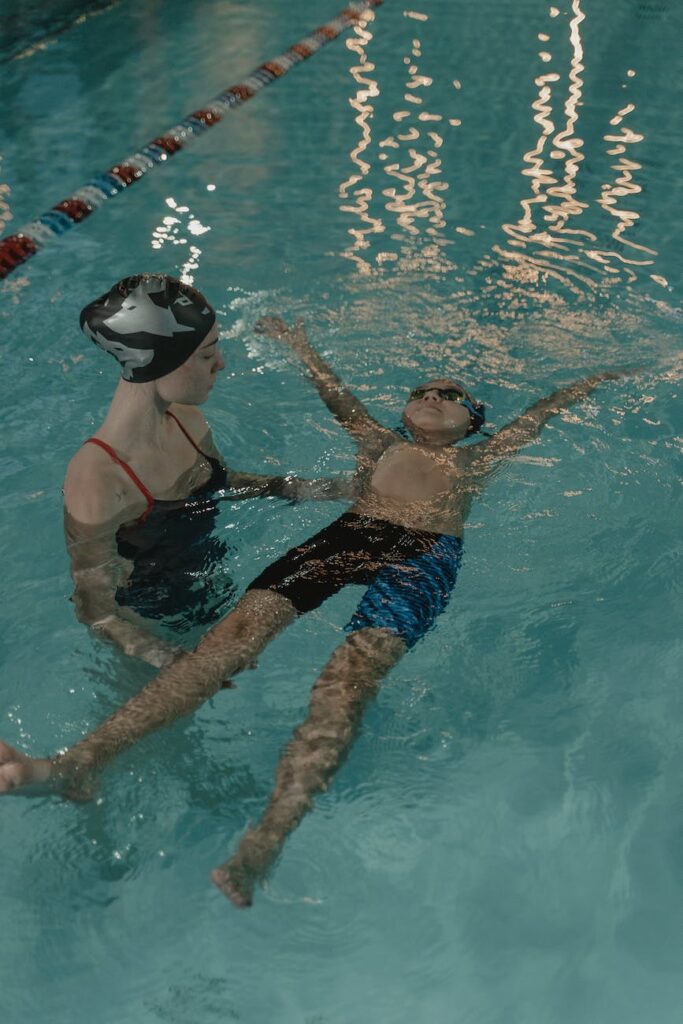Swimming is a healthy and fun activity that can offer a line of defence against drowning.
Learning to swim can be an equal feeling for a child, just like an adult standing on top of Mt. Everest. Like many things, swimming is about finding the right balance in a new environment.
Thus, the key is to instruct the child with a gradual process so that there is no fear in them and they are still being challenged in every swimming lesson.
So, what can you do to assist your child in swimming? This article emphasizes certain dos and don’ts while teaching the kids how to swim.
Let’s get started.
Swimming Lessons: Do’s
You can visit the page if your child is interested in learning on how to swim. Here are some of the do’s that your child should follow.
1. Keep The Water Warm
Warm water in pools is ideal for a swim lesson. This is because it helps the child with different therapeutic benefits such as intensity exercise, release of stiff muscles, ease of sores, increased range of motion, and maintaining fitness and health.
There might be hypothermia at the age of 3. This is why the water should be within 87 to 94 degrees Fahrenheit. On the other hand, the pool should always be 20 degrees cooler than the air temperature.
Thus, purple lips and shivering bodies do not add fun to swimming lessons.
2. Consider The Environment
The benefit of swimming classes is that they can make for a great social scene and are crucial for a child’s development at a younger age.
Within a group setting, the child can also socialize with other kids.
Thus, not only the child gets the benefit but also the parents. When they meet other parents, it can make the lessons even more interesting, and everyone meets a new person.
Similarly, inform the concerned person immediately if you see something around or in the pool.
Thus, do stay vigilant and know who is swimming and who is out of the pool.
3. Keep It Fun
As everyone knows, kids do not have the longest attention span, so you must keep toys in the pool.
You can also make it a fun experience by using games as they assist in enhancing swimming skills. Similarly, it is also important that your child bonds with the instructor. This forms a strong connection and makes it easier for the child to learn their lesson.
Swimming Lesson: Don’ts
When it comes to swimming, you simply can’t do whatever you want. So, as we’ve talked about the “dos” before, now we will discuss the “don’ts.”
1. Do Not Leave The Child Unattended Around Water Source
This includes swimming pools, open water sources, or anything that can hold water up to an inch or more.
Remember to cover the mouth and nose, then supervise your child when they are around the swimming pool. If they are in a large gathering, assign an adult to oversee the pool area when the children are present.
One of the best ways is to ensure that no one gets hurt by keeping a close eye on the child all the time, no matter how experienced they are in swimming.
2. Do Not Dive Headfirst Into The Water Source
You must check on the child when they arrive near a pool. Neck and head injuries can happen if the child goes unnoticed.
Check the pool deck to see if diving is allowed, and consult the staff member before diving.
Even if the child is small, always ensure they enter the water with their feet first.
3. Do Not Forget To Stay Hydrated
Always keep a water bottle around the pool when your child goes swimming. When they are hydrated, it will help them reduce heat-related emergencies such as heat exhaustion, heat cramps, and heat stroke.
This will help them keep the body regulated with temperature and keep the body cooled down during the hot summer days.
Summing Up
Learning how to swim is a new and different feeling for any individual.
As parents, you should always supervise the kids from a young age and motivate them to learn to swim. Moreover, having basic swimming skills is the key to water safety.
Remember, your child needs to play games in water. Make them spend time in the baby pool, under the shower, in the public pool, and splash parks between the swimming lessons.
You can also bring toys so that the child can have fun and practice swimming skills.

